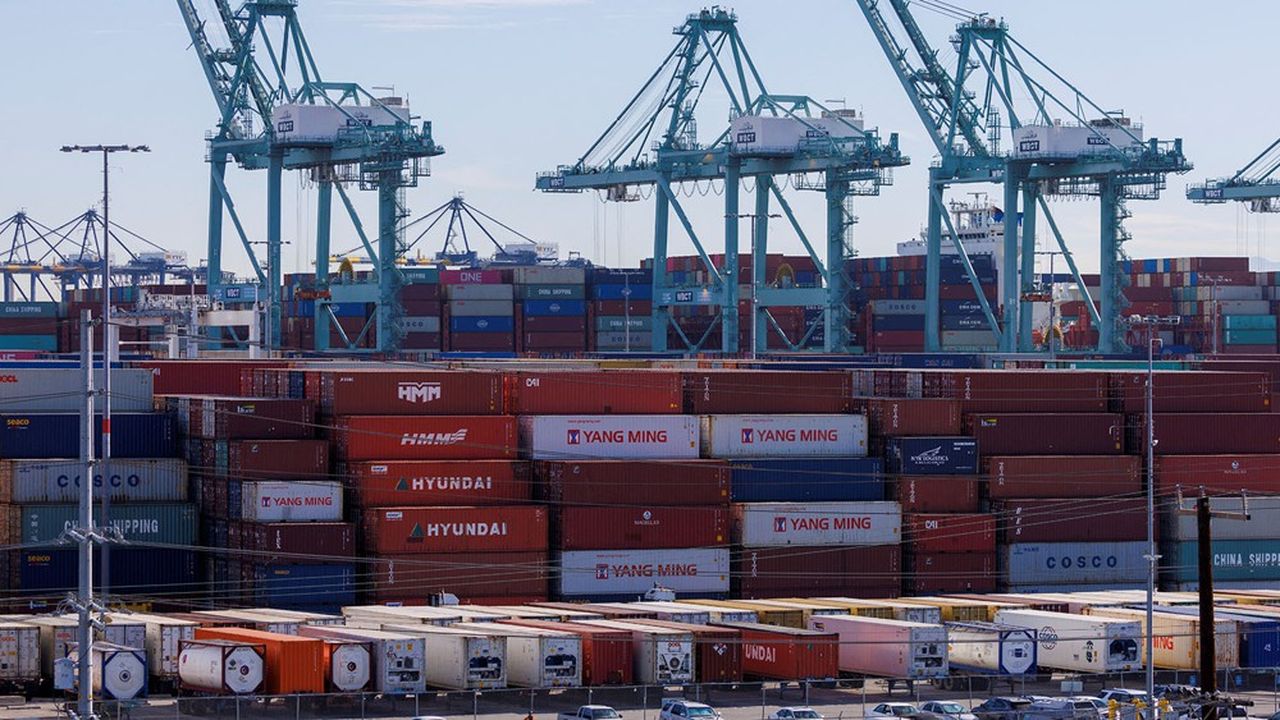
Merchandise exports from G20 countries stagnated in the second quarter, according to data released Friday by the Organisation for Economic Co-operation and Development (OECD). In the previous quarter, they had grown by 1.7%.
The slowdown was largely due to a decline in the export performance of European Union (EU) countries. Their foreign sales fell by 0.9%, mainly due to developments in Germany, where exports of chemicals and other manufactured goods declined.
Overall, European trade is struggling. According to Eurostat, the eurozone continued to generate trade surpluses (€107.5 billion) in the first half of the year. However, the decline is clear in both exports and imports. Exports of goods to the rest of the world (€1,430 billion) fell by 0.8% compared to the same period in 2023. Over the same period, imports fell by 8.4% (€1,322 billion).
American imports
The G20 countries’ more robust performance is primarily due to the strength of the United States and the United Kingdom. US imports, particularly of capital goods such as electrical equipment, rose 2.6% in the second quarter, while those of the United Kingdom jumped 8.3% thanks to purchases of machinery and transport equipment. Brazil (+10.9%), South Korea (+2.2%) and China (1.8%) also increased their purchases.
On the export side, Argentina (+5.2%), South Korea (+2.7%) and China (+2%) lead the way. East Asia recorded strong sales of automobiles, semiconductors and high-tech equipment, the OECD said. Conversely, Japan’s exports fell by 2.1%, partly due to the closure of a major automobile plant in particular.
Last spring, the WTO, while being optimistic about a recovery in world trade, had nevertheless warned of increasing geopolitical risks. Since then, trade tensions have continued to increase, as have increasingly strained relations between China and the United States, but also between the EU and China.
Last July, the WTO Director-General expressed her concerns about the fragmentation of the world: “We are concerned about the emerging fragmentation that we see in trade data. Trade between like-minded blocs is growing faster than trade between blocs.”
Globalization in decline
“Protectionism is a structural problem. A substantial buildup of trade restrictions since 2009 could explain up to a fifth of the recent weakness in trade,” says Adam Slater, an economist at Oxford Economics. He believes that the explanation for the persistent slowdown in global goods trade is cyclical weakness in some regions.
“Import volume growth in Europe is particularly weak, reflecting the slow economic growth in the region. This is a significant global drag given Europe’s weight in world trade,” he says. Trade weakness is also evident in Japan and some emerging regions, including Latin America, the Middle East and Africa.
According to the latest estimates from Oxford Economics, a 1% increase in global GDP is associated with an increase of only 0.8% to 0.9% in world trade in goods, compared to the nearly 2% observed just before the great financial crisis of 2008. Current levels have not been seen since the Great Depression of the 1930s. The Anglo-Saxons have a term for such trade torpor: “slowbalization.” In short, the globalization that led to an explosion of world trade in the 1990s and 2000s has reached a plateau.





